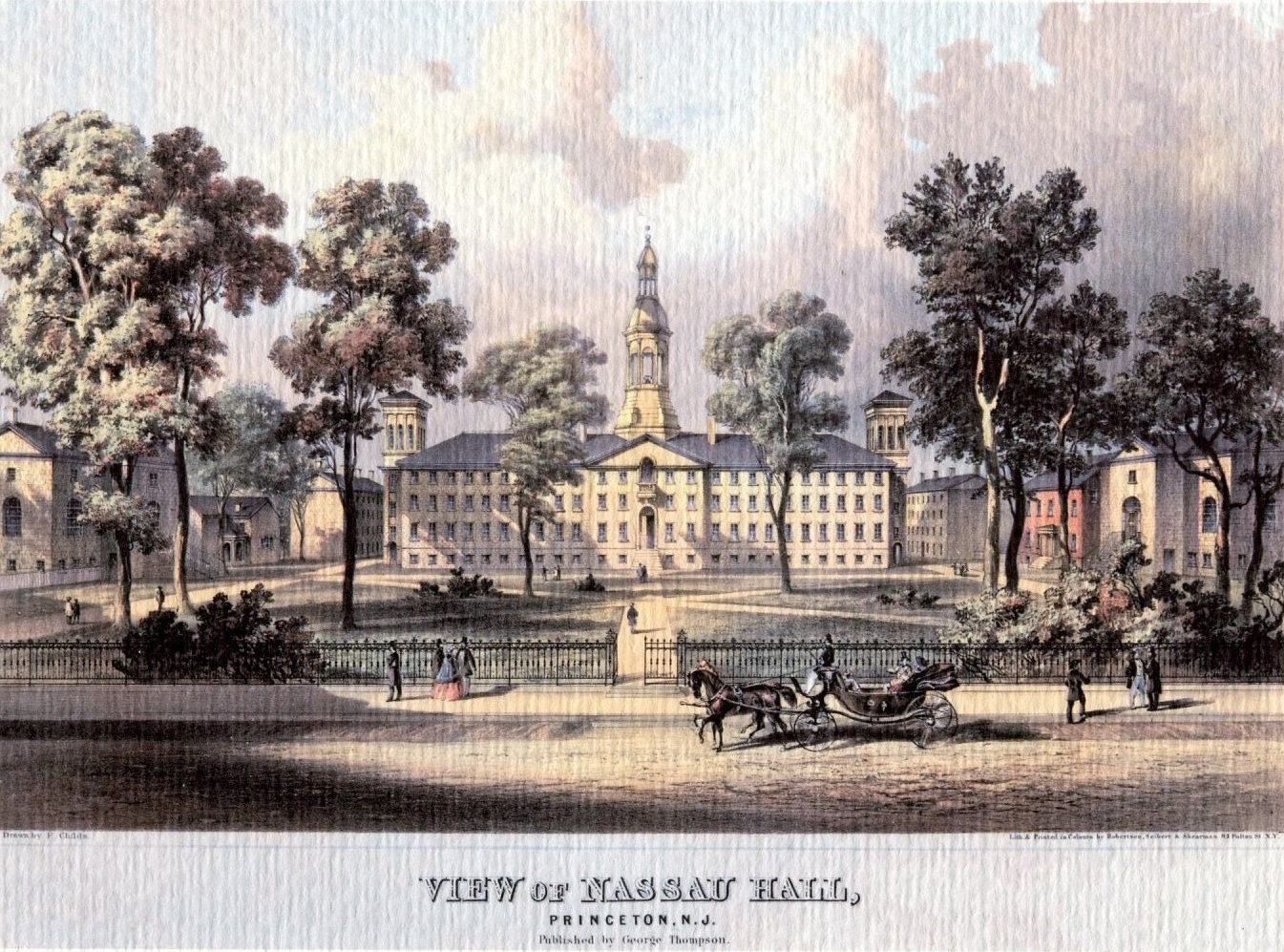By Sarah Robey
[We recently digitized a campaign film from the Adlai E. Stevenson Papers, located in our Public Policy Papers. The film, “Nuclear Test Ban,” was produced as a televised campaign program for Stevenson’s 1956 presidential bid against Dwight D. Eisenhower. The film speaks to an important transitional moment in the American encounter with nuclear weapons.]
With a deafening roar, a mushroom cloud blossoms on the screen. As viewers watch the cloud of smoke, dust, and water vapor take its awful form, a narrator declares, “this is the H-Bomb at work… This is the means for destroying all living things on earth.”
The scene cuts to Adlai Stevenson, Democratic candidate in the 1956 presidential election, as he makes his case to the American public for a ban on hydrogen bomb testing. Stevenson is quick to dispel the notion that his proposal is simply an election maneuver: the issue “was and it is too serious for that,” despite then-Vice President Richard Nixon’s assertion that a ban was “catastrophic nonsense.”
For the next twenty-three minutes, Stevenson and a group of experts in the field present a grim assessment of the possible consequences of America’s nuclear testing: sickness, war, and horrors unknown.
The film ends with Stevenson’s disquieting appeal: “I believe we must somehow guarantee mankind against the horrible destructiveness of the hydrogen bomb… I believe we have no alternative.”
H-bombs, also known as hydrogen, thermonuclear, or fusion bombs, were many times more powerful than anything the world had seen before. They destroyed larger areas and released more toxic radiation into the atmosphere than earlier atomic bombs. During its developmental stages, the H-bomb was coined as “The Super,” a moniker that attests to the radical differences between it and previous weapons.
Since shortly after World War II – and before the development of hydrogen bombs – nuclear physicists and other public intellectuals had cautioned against the further development of nuclear technology. Still, the added danger of the H-bomb only attracted the attention of a minority of concerned citizens by 1956. Indeed, Republicans attacked Stevenson with “irrational and scurrilous abuse” for his test-ban platform throughout the campaign. He lost again in the second of two presidential campaigns against then-incumbent President Dwight D. Eisenhower. Yet over the course of the next few years, public opinion about nuclear weapons testing would change dramatically, causing one journalist to note in hindsight that Stevenson had been “The Man Who Was Right Too Soon.”
By 1958, protest groups began to coalesce around the interconnectedness of weapons proliferation, nuclear testing, environmental and public health, foreign policy, and the struggle for world peace. These anti-nuclear organizations – perhaps the best-known are the Committee for a SANE Nuclear Policy and, later, Women Strike for Peace – gained prominence in the public dialog by warning of the dangers of testing radiation and the threat of global nuclear annihilation. This was the very message that Stevenson had advocated earlier in the decade.
Also in 1958, President Eisenhower, Soviet Premier Nikita Khrushchev, and British Prime Minister Harold Macmillan voluntarily placed a moratorium on all nuclear testing. Although the moratorium dissolved during international crises in 1961 and 1962, the brief testing respite set a series of international talks in motion that would eventually result in the Partial Test Ban Treaty of 1963. Stevenson’s conviction about the necessity for such an agreement did not flag in the years following his second defeat. As ambassador to the United Nations during the Kennedy administration, he remained a prominent voice in nuclear policy discussions.
Stevenson’s long engagement with test ban proposals did not go unnoticed by the public. As test ban negotiations progressed, some citizens suggested that Stevenson deserved credit for beginning the discussion in 1956. Several of those documents are now housed in the Public Policy Papers’ digital collections. Especially of note is the newspaper editorial arguing that for his foresight and courage, at the very least Stevenson deserved to receive one of the ceremonial pens used to sign the treaty (Edwin A. Lahey, “Adlai Entitled to Treaty Pen,” Chicago Daily News, 3 August 1963).
The Partial Test Ban Treaty, signed on August 5, 1963 by all three nuclear states, banned nuclear tests performed above ground, under water, and in outer space. Upon the Senate’s ratification of the treaty, Stevenson humbly reflected, “I have been working for an agreement to stop nuclear testing since the 1956 Presidential campaign. So this is a happy day for me. And I think this first step on the long, rocky road to safety and sanity is an historic day for the world.”
—
This year is the 70th in this Atomic Age. Although the uncertainties and tensions of the Cold War are quickly fading into history, the consequences of global nuclear development reverberate today. When new nations acquire, or attempt to acquire nuclear technology, the world listens and holds its breath. Indeed it may be some time before we reach the end of Stevenson’s “long, rocky road.”
Source:
Adlai Stevenson Papers (MC124), Subseries 5D, Box 350, Folder 12
Sarah Robey is a doctoral candidate in American history at Temple University. Her dissertation, “The Atomic American: Citizenship in a Nuclear State, 1945-1963,” examines civic life and nuclear preparedness in the early Cold War. She is currently a visiting faculty member of the Department of American Studies at the University of Tübingen in Germany.

One response to ““The Man Who Was Right Too Soon”: Nuclear Test Ban film”
[…] like in this post about the Liberty Loan Fund’s advertising for women during World War I or videos like this campaign film about nuclear weapons to use as primary sources on topics completely distinct from our reasons for putting them up on the […]